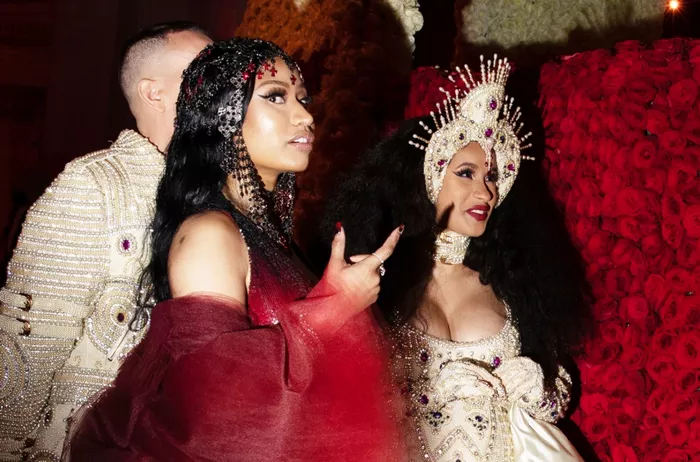In the vast and diverse landscape of music genres, instrumental rap stands out as a unique and intriguing category. While rap music traditionally places a heavy emphasis on lyrical content and vocal delivery, instrumental rap shifts the focus to the musical composition itself, stripping away the vocals to highlight the intricacies of the beats, melodies, and rhythms. In this article, we delve into the essence of instrumental rap music, examining its origins, characteristics, and significance within the broader spectrum of musical expression.
Origins and Evolution
To understand instrumental rap music, it’s essential to trace its roots back to the early days of hip-hop culture. Hip-hop emerged in the South Bronx of New York City during the 1970s, characterized by its distinctive blend of DJing, MCing (rapping), graffiti art, and breakdancing. In its infancy, hip-hop primarily revolved around live performances where DJs would manipulate vinyl records to create rhythmic loops and breakbeats, which MCs would then rap over.
Instrumental rap began to gain prominence as DJs and producers started releasing extended versions of their tracks without vocals, often referred to as “instrumentals.” These instrumental versions allowed MCs to showcase their lyrical prowess during live performances or for freestyling sessions without the distraction of pre-recorded vocals. Over time, instrumental rap evolved into a standalone genre, appreciated for its musical complexity and ability to evoke emotions without the need for lyrical content.
Characteristics of Instrumental Rap
At its core, instrumental rap shares many characteristics with traditional hip-hop production but places a stronger emphasis on the musical arrangement itself. Here are some key elements that define instrumental rap music:
Beat-centric Composition: Instrumental rap places a heavy emphasis on the beat, with producers meticulously crafting intricate rhythms using drum machines, samplers, and synthesizers. These beats often feature hard-hitting drum patterns, sampled loops, and dynamic basslines, creating a foundation for the music’s groove and energy.
Sample-based Production: Sampling plays a significant role in instrumental rap, with producers drawing inspiration from a wide range of musical sources, including funk, soul, jazz, and rock. By sampling snippets of existing recordings and recontextualizing them within their compositions, producers can create unique and innovative sounds that pay homage to the rich history of hip-hop culture.
Melodic Elements: While instrumental rap is primarily focused on rhythm and groove, it also incorporates melodic elements to enhance the overall musicality of the compositions. This can include sampled melodies, synthesized chords, and atmospheric textures that add depth and dimension to the music.
Dynamic Arrangements: Instrumental rap tracks often feature dynamic arrangements that evolve and progress over time. Producers may incorporate breakdowns, build-ups, and transitions to keep the listener engaged and create a sense of narrative or emotional arc within the music.
Genre Fusion: Instrumental rap is known for its versatility and willingness to experiment with diverse musical styles and influences. Producers often blend elements from different genres, such as electronic music, ambient, trap, lo-fi, and experimental, resulting in a rich tapestry of sonic textures and aesthetics.
Significance and Influence
Instrumental rap holds significant cultural and artistic importance within the realm of hip-hop music and beyond. Here are some key ways in which instrumental rap has made an impact:
Artistic Expression: Instrumental rap provides producers with a platform for artistic expression and creativity, allowing them to showcase their musical talents and explore new sonic territories. Without the constraints of vocal content, producers have the freedom to experiment with sound design, arrangement, and production techniques, pushing the boundaries of what is possible within the genre.
Collaborative Potential: Instrumental rap serves as a catalyst for collaboration and cross-pollination within the music industry. Producers often collaborate with MCs, singers, instrumentalists, and visual artists to create immersive multimedia experiences that transcend traditional boundaries and genres.
Cultural Documentation: Instrumental rap serves as a form of cultural documentation, capturing the spirit and energy of urban landscapes and communities. Through sampled recordings and sonic textures, instrumental rap reflects the social, political, and cultural realities of the environments from which it emerges, providing a voice for marginalized communities and underscoring the power of music as a form of social commentary and resistance.
Global Influence: Instrumental rap has transcended geographical boundaries and cultural barriers, resonating with audiences around the world. Through online platforms and digital distribution channels, instrumental rap producers have been able to reach global audiences and connect with like-minded musicians and fans, fostering a vibrant and diverse community of artists and enthusiasts.
Educational Resource: Instrumental rap serves as an educational resource for aspiring producers, DJs, and musicians, offering insights into the techniques, tools, and traditions of hip-hop production. Through tutorials, sample packs, and online communities, instrumental rap producers share their knowledge and expertise, empowering the next generation of creators to continue pushing the boundaries of musical innovation.
See Also: Chill Rap Songs
Conclusion
In conclusion, instrumental rap music represents a dynamic and multifaceted genre within the broader spectrum of hip-hop culture. With its beat-centric compositions, sample-based production, and genre-defying aesthetics, instrumental rap continues to push the boundaries of musical expression and inspire a new generation of artists and listeners. As we continue to explore the rich tapestry of sounds and styles within instrumental rap, we gain a deeper appreciation for the creativity, diversity, and innovation that define this captivating genre.

